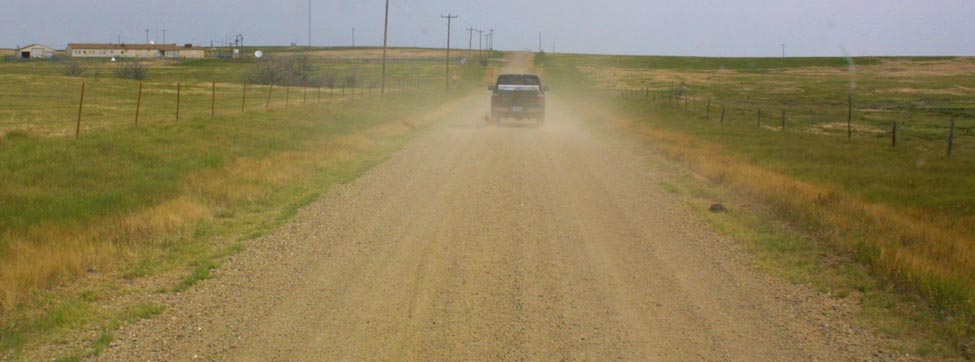
|
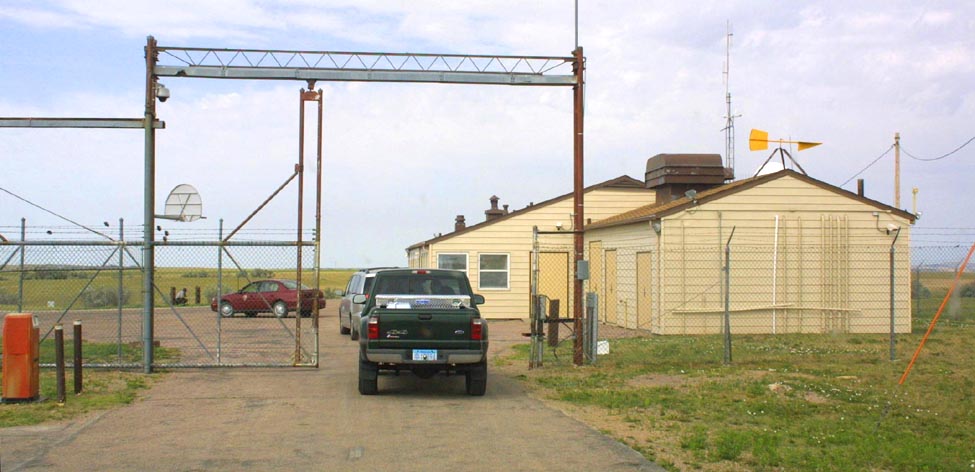
|
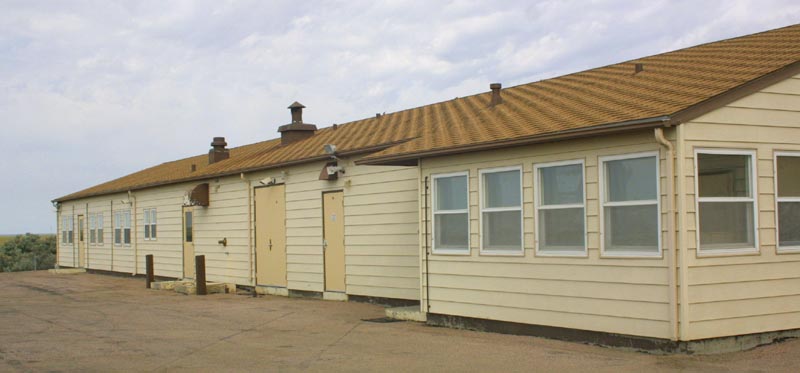
|
Inside the fence, the above ground portion
of the facility is unimpressive. It certainly gives no indication of the
forces being controlled, or of it's importance to national defense.
|
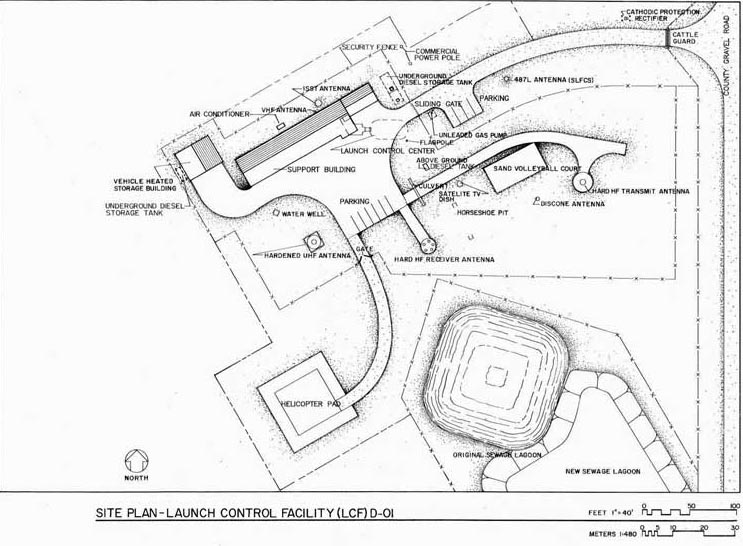
|
A diagram of the Delta-01 LCC.
|
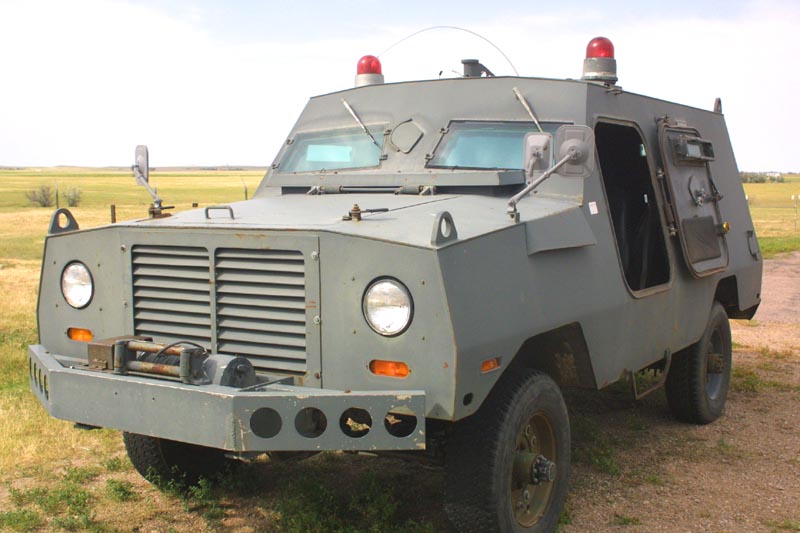
|
These armored cars were called Peacekeepers.
They were standard Dodge trucks, which had been modified by the application
of armor plate. The also had radio gear, and a top mounted machine gun.
They would regularly patrol the missile fields, and would respond to calls
of tamper indicators being set off. They were cold in the winter, hot in
the summer, and had a bone jarring ride, due to the weight of the armor plate,
and the airless bullet proof tires.
|
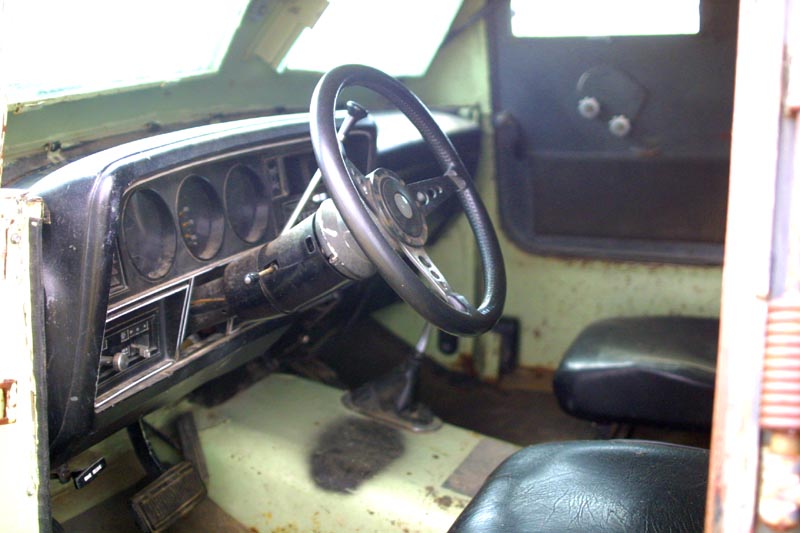
|
A look at the drivers compartment of the Peackeeper
shows it to be that of a standard Dodge light truck.
|
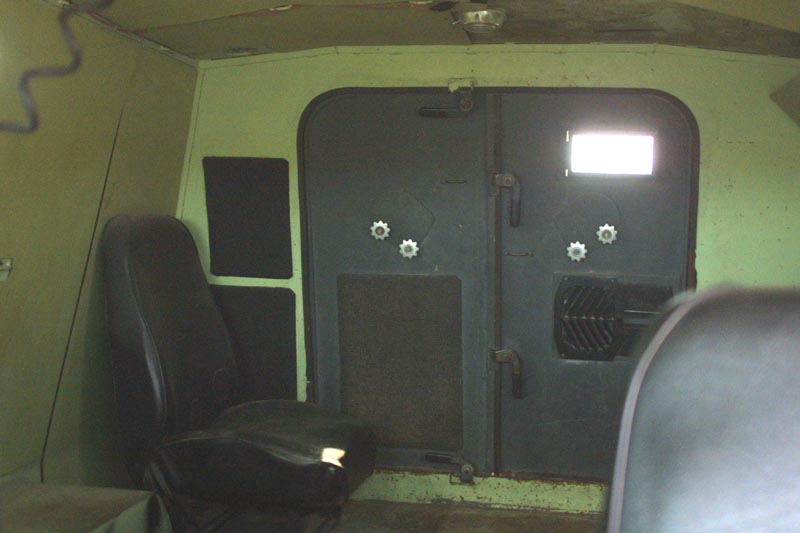
|
A look towards the back, showing the double armored
doors.
|
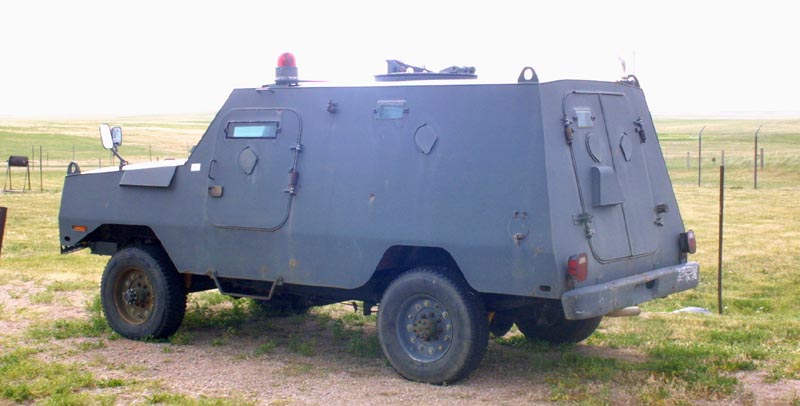
|
The Peacekeeper, from the back. Note that the
bulletproof windows do not open.
|
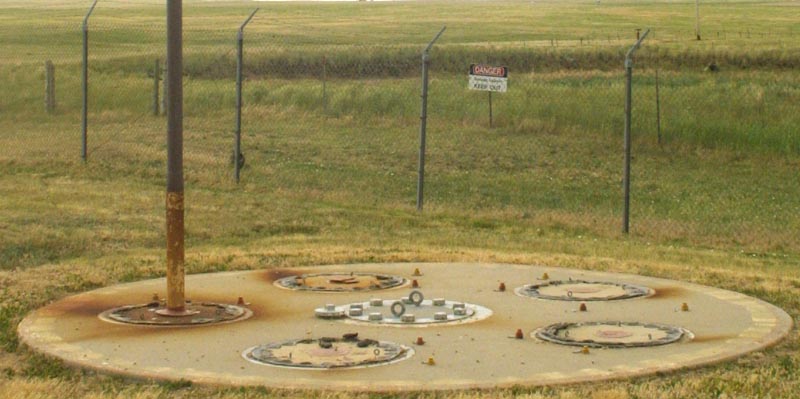
|
This is part of the LCC antenna farm. This is
a ring of hardened HF receiver antennas. This allowed communications with
aircraft, and other bases. There is a ring of five antennas, with one raised
into receiving position, and the others lowered under their protective concrete
pad. The idea here, was that during a nuclear attack, the first antenna would
be vaporized. The LCC would then raise another. It could do this four times,
until all five antennas were vaporized, should this be required.
|
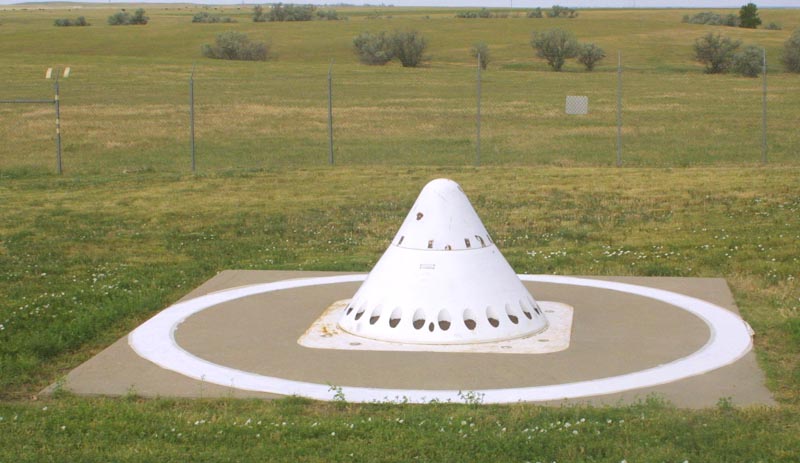
|
This is a hardened UHF antenna, essentially a
long concrete cylinder, mostly buried underground, with antenna elements
encased inside. Only the tip of the antenna poked it's nose above ground.
This is one of the ways that the LCC had of communicating with the silo.
|
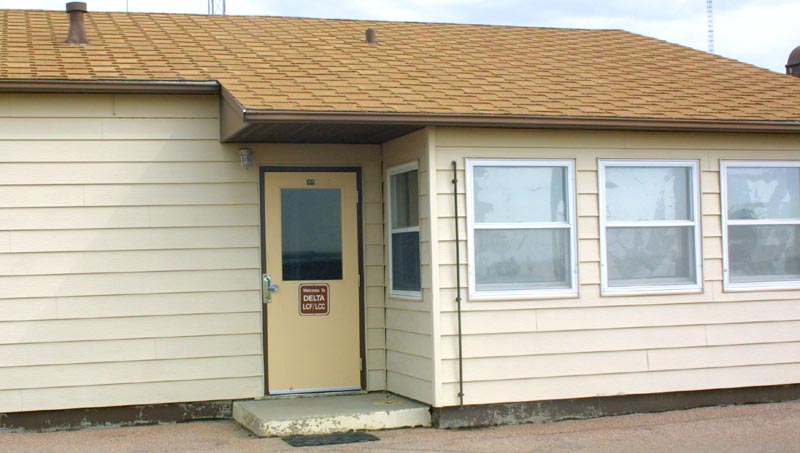
|
Notice the welcome mat, and the sign on the door.
The security center, with the door to the underground LCC is to the
right, while the dayroom, and living quarters are to the left.
|
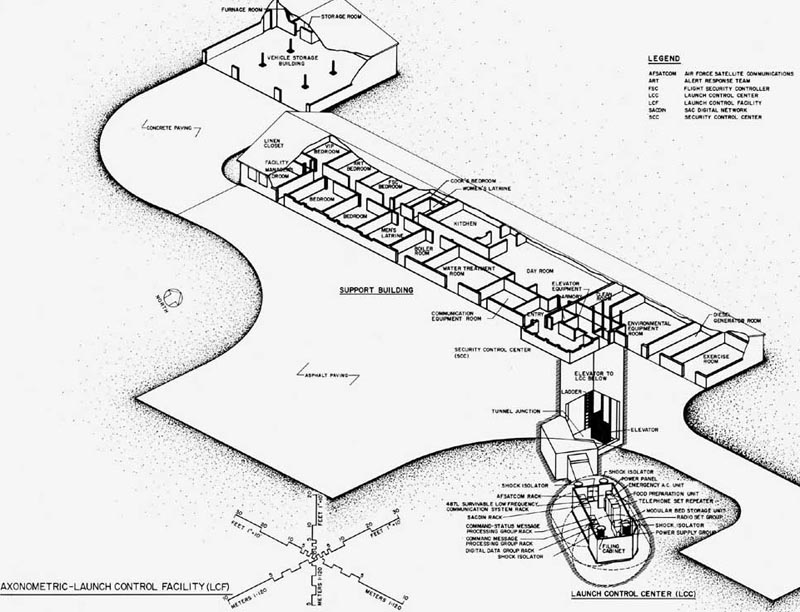
|
A general plan of the building, showing the various
rooms, the vehicle storage, and the LCC capsule below.
|
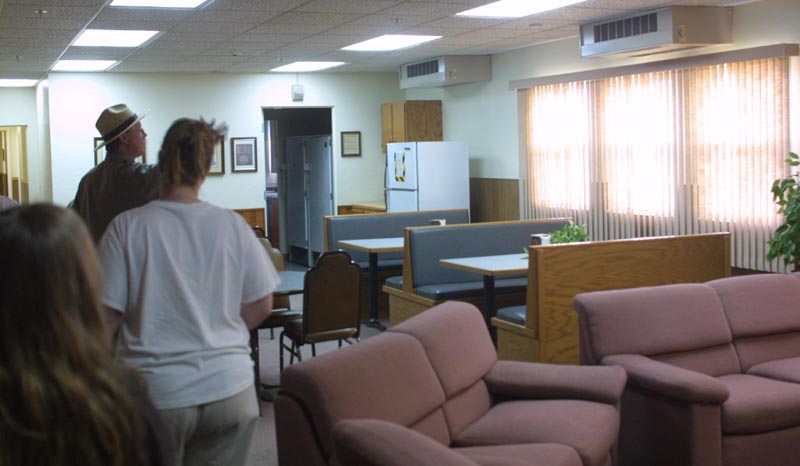
|
We are in the dayroom, having just come in
through the main entrance. It is a fairly comfortable place, with tables,
and lounge areas. Living quarters are towards the back, while the kitchen
is to the right, and back.
|
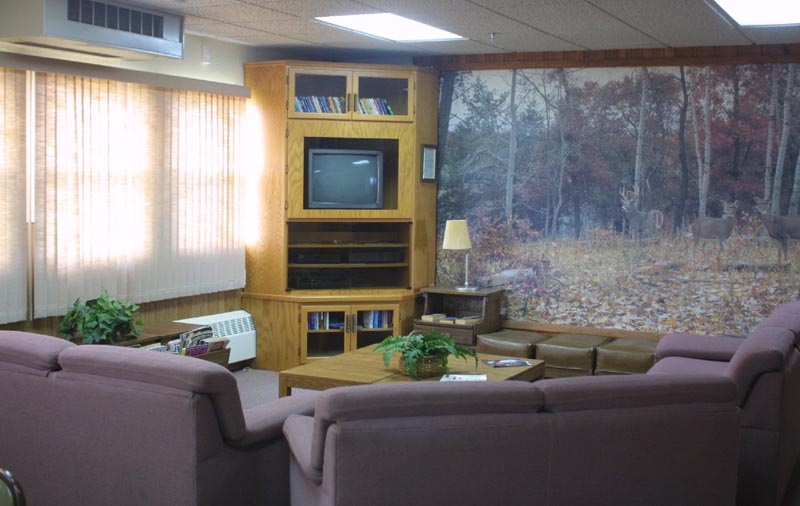
|
A look towards the front of the dayroom. Though
not the lap of luxury, these were fairly comfortable assignments. the worst
thing about being stationed here was the boredom. These were small facilities,
with a relatively small number of personal, and little to do, outside of
one's duties.
|
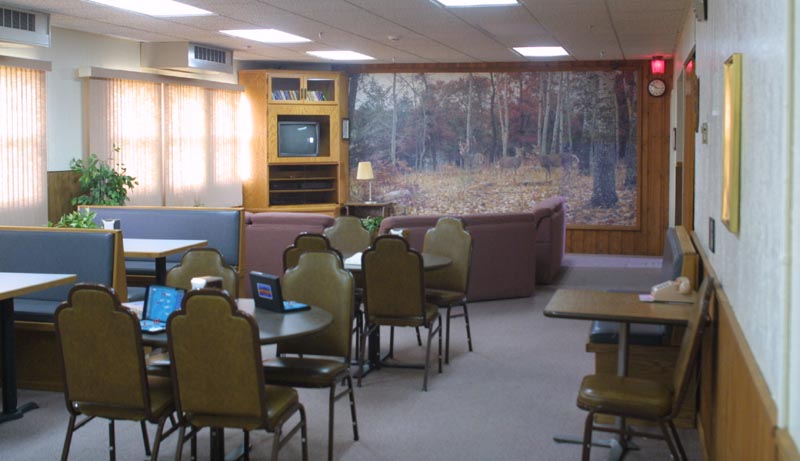
|
A look forward, from the back of the dayroom.
Note the Battleship game set up on one of the tables.
|
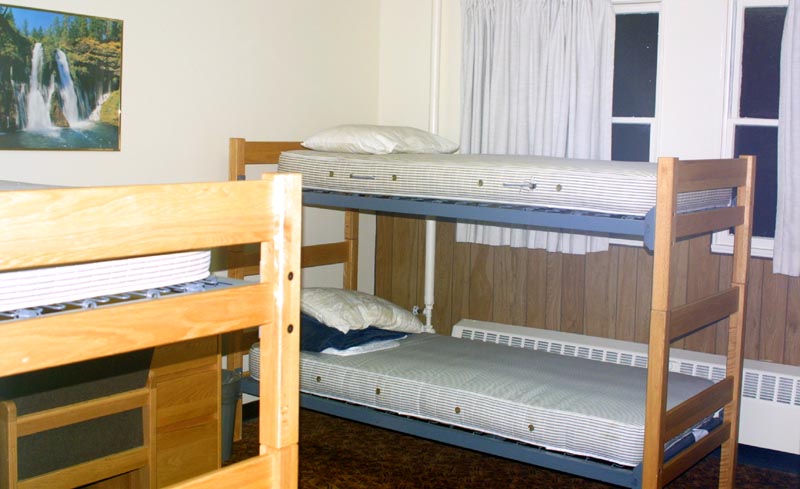
|
One of the bunk rooms. Again, this was not
the lap of luxury; but it was fairly comfortable. The Air Force did what
it could to mitigate the isolation of these facilities.
|
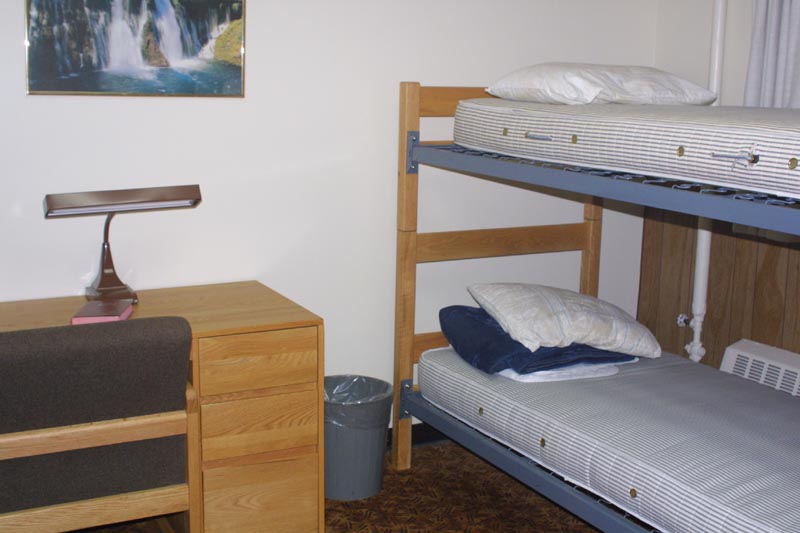
|
Another look at the bunk room.
|
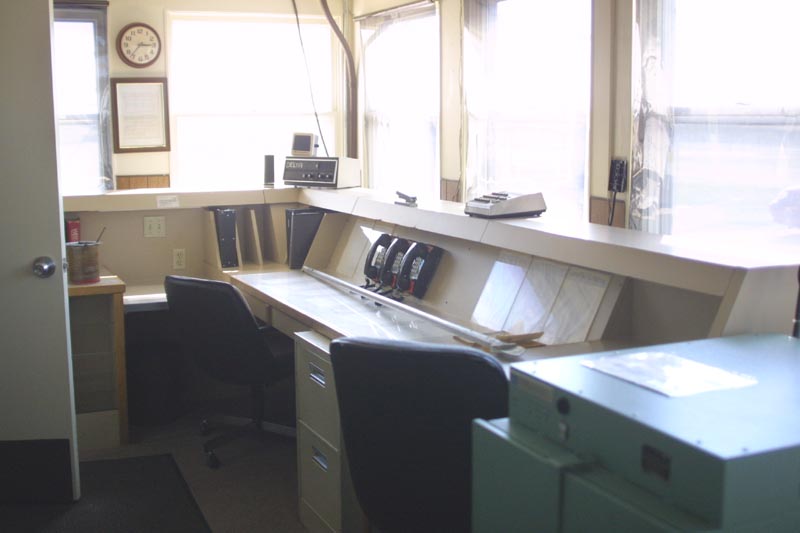
|
This is the security center, and is located
just to the right of the main entrance. It sticks out a bit, from the rest
of the building, permitting wrap around windows. You had to pass through this
room, which was always staffed, in order to get into the underground LCC.
The security center had an unimpeded view of the gate, and of the access road.
|
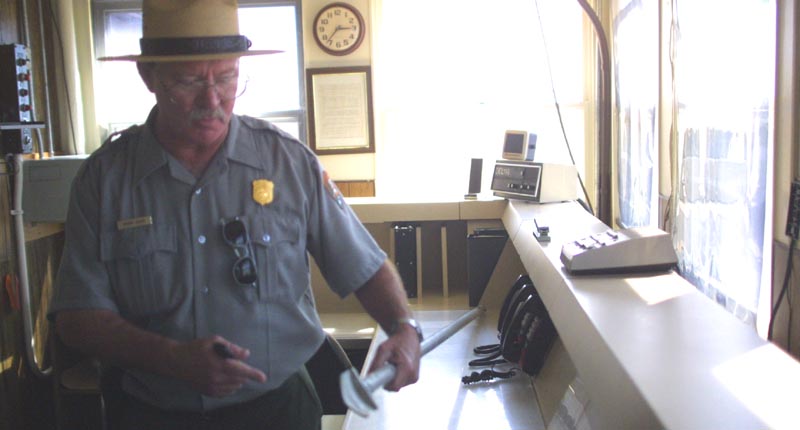
|
Our guide showing us the escape shovel, which
was a part of the gear of the underground LCC. The underground section had
an escape hatch, since in a nuclear attack, the upper levels would be vaporized,
and it would be impossible to come back up by elevator. The escape route
led through a sand filled tube, to a hatch cover which was buried a few feet
below the surface. This shovel would be used to dig out the sand, and to dig
the last few feet to freedom. The location of the escape hatches was unknown.
They had been randomly dug by the builder.
|
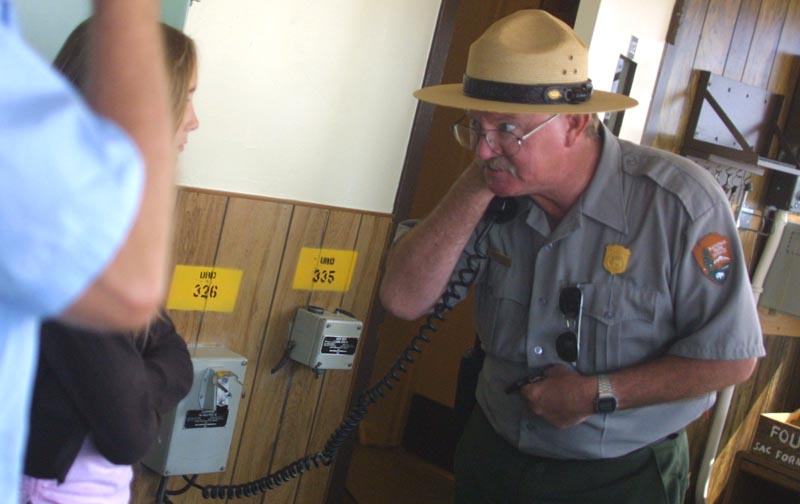
|
The steel door, behind our guide, was normally
locked. In order to get it opened, you called downstairs. As soon as you
picked up the phone, you immediately identified yourself, and then repeated
an access code consisting of a random string of numbers and letters. If you
were off at all, you had to immediately hand to phone to your partner, who
would have one chance. If you took more than a couple of seconds to had the
phone over, or if both partners got their codes wrong, the people downstairs
hung up, and an alarm was sounded. You would then be surrounded by humorless
men with M-16 rifles, and taken outside.
|
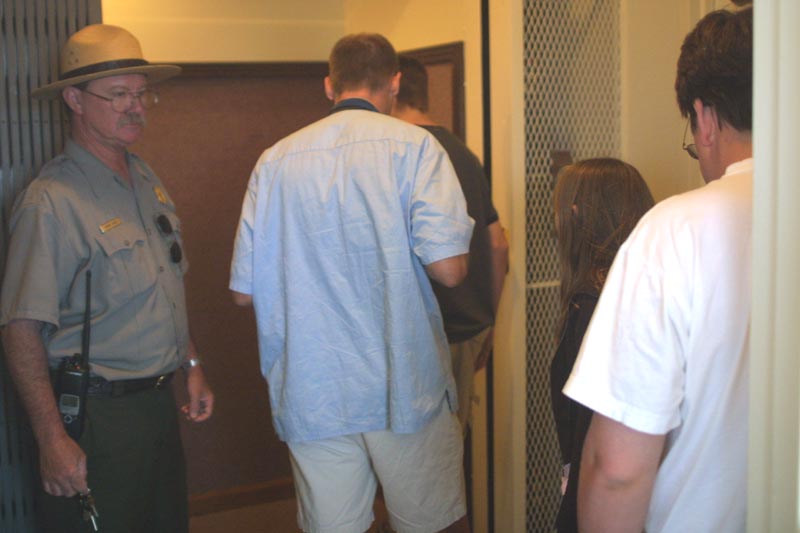
|
Through the steel door, and into the elevator
leading to the underground LCC. This is a small elevator, which rarely carried
more than two passengers. because of this, and because of the small size
of the LCC itself, tours are limited to groups of six.
|



